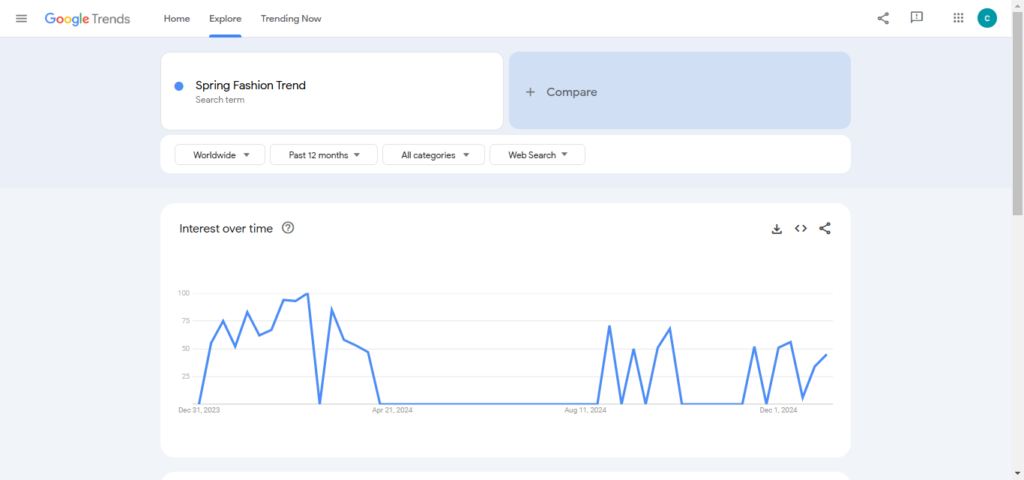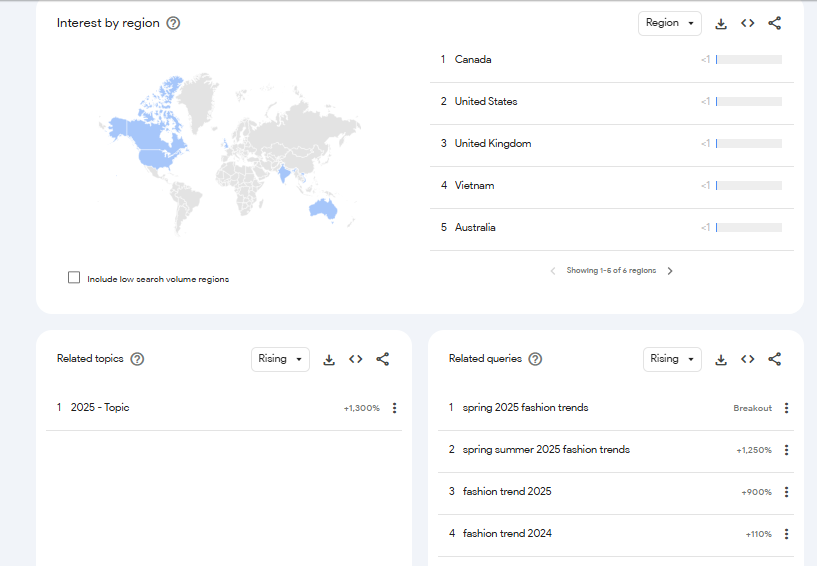Table of Content
Table of Contents
- What is Google Trends?
- How can I maximize Keyword research with Google Trends?
- How can Google Trends improve keyword research?
- How can I use Google Trends for Content Creation?
- Can Google Trends help with Competitor Analysis?
- What are some successful case studies using Google Trends?
- What are the best practices for using Google Trends?
- What are the emerging SEO Trends for 2025?
- Conclusion
In the ever-evolving world of SEO, staying ahead of the competition requires using advanced tools and insights. Google Trends, a free yet powerful resource, offers unparalleled access to real-time and historical search data. Explore Google Trends. In 2025, mastering Google Trends is no longer optional—it’s essential for content creators, marketers, and SEO specialists striving for success.
Google Trends provides a unique opportunity to understand the “why” and “when” behind search queries, offering insights into user intent and behavior. For example, a fashion retailer analyzing Google Trends discovered an emerging interest in “eco-friendly summer dresses” early in the season. By analyzing Google Trends data and identifying an emerging interest in ‘eco-friendly summer dresses,’ they swiftly created targeted content and updated their product line, capturing this trend and experiencing a noticeable increase in traffic and sales. By leveraging such data, you can tailor your SEO strategy to align with your audience’s needs, identify trending topics before they peak, and adapt to changing market dynamics. Whether you’re a seasoned marketer or a business owner aiming to enhance your digital presence, Google Trends can be the game-changer your strategy needs.
This guide will explore utilizing Google Trends to boost your SEO strategies, focusing on actionable tips, emerging trends, and best practices tailored for the modern digital landscape. By the end of this article, you’ll be equipped with the knowledge to identify opportunities, target your audience effectively, and stay ahead of search behavior trends.
What is Google Trends, and how does it work for SEO?
Google Trends is more than just a keyword research tool—it’s a gateway to understanding your audience’s search behavior. Unlike traditional keyword tools that provide static search volume metrics, Google Trends offers insights into relative search interest, enabling you to:
Discover real-time search trends to identify what’s popular now.
Analyze search patterns from 2004 to the present, providing a historical perspective on search behavior.
Explore keyword popularity by region and time to understand geographic and seasonal preferences.
Identify related queries and topics for content expansion, helping you uncover hidden opportunities.
For instance, if you’re researching “spring fashion trends,” Google Trends can help you determine when search interest peaks,

which regions exhibit the highest demand, and what related keywords to prioritize. This allows you to create content that aligns perfectly with user intent and seasonal demand, boosting both visibility and relevance.

How can I maximize keyword research with Google Trends?
Google Trends’ ability to compare multiple terms or analyze searches across platforms like YouTube and Google Shopping makes it very useful for thorough keyword research. Integrating this tool into your workflow allows you to craft a data-driven content strategy that resonates with your audience and ranks effectively in search engines. Learn more about Google Trends Features.
Leveraging Google Trends for SEO Success
1. Keyword Research
How can Google Trends improve keyword research?
Identifying high-impact keywords is fundamental to any successful SEO strategy. Google Trends can:
Highlight “breakout” keywords experiencing explosive growth, giving you a head start on trending topics.
Reveal seasonal spikes, allowing you to plan content calendars around high-demand periods (e.g., “back-to-school supplies” in August).
Compare multiple search terms to determine which resonates most with your audience, ensuring that your efforts focus on terms with the greatest potential ROI.
For instance, if you’re in the fitness industry, comparing search terms like “home workout equipment” and “gym memberships” can reveal shifts in consumer preferences, guiding your content strategy accordingly.
2. Content Prioritization
How can I use Google Trends for content creation?
Creating content that aligns with current search behavior is key to attracting traffic and keeping users engaged. Use Google Trends to:
Focus on trending topics that resonate with your target audience, ensuring relevance and timeliness.
Optimize content timing by publishing articles or campaigns during periods of peak interest, maximizing visibility and impact.
For example, a blog about “holiday gift ideas” published in early November is more likely to gain traction than one released in December, when interest declines.
3. Competitor Analysis
Can Google Trends help with competitor analysis?
Understanding how your competitors are performing can provide valuable insights into market dynamics. Google Trends enables you to:
Benchmark brand-related search terms, gauging market interest and identifying areas where your competitors may be gaining traction.
Discover content gaps by analyzing their focus areas and identifying topics they have overlooked. This will allow you to position yourself as a more comprehensive resource.
Case Studies: Success Stories with Google Trends
What are some successful case studies using Google Trends?
Local Business Gains Visibility with Regional Insights: A case study from UMA Technology highlighted how a local bakery achieved a 460% traffic boost. This success came from employing SEO strategies such as optimizing their website for local search terms, improving page load speed, and crafting high-quality blog content targeting popular local queries. By focusing on Google Trends data to understand local search behavior, they gained significant visibility and customer engagement.
Blogging Platform Drives Traffic with Trending Topics:
According to a case study from Digital Travel Expert, a travel blogger used Google Trends to identify rising interest in “remote work destinations.” By aligning their content with search trends, the blogger created articles targeting highly searched queries like “best countries for digital nomads” and “remote work visas.” This strategy resulted in a dramatic increase in blog traffic and engagement, solidifying their reputation as a go-to resource for travel advice.
Best Practices for Using Google Trends
What are the best practices for using Google Trends?
- Combine with Other Tools: Use Google Trends alongside tools like Google Keyword Planner and SEMrush for deeper insights.
- Focus on User Intent: Ensure your content answers questions or solves problems aligned with search queries.
- Stay Updated: Regularly monitor trends to adapt your strategy as user interests evolve.
- Localize Content: Customize your content to match regional trends and preferences.
- Avoid Overgeneralization: Balance trending topics with evergreen content for long-term relevance.
Emerging Trends for 2025
What are the emerging SEO trends for 2025?
AI and Predictive Search: AI tools are revolutionizing search by predicting what users will look for next. Integrating Google Trends data with AI can help preemptively target upcoming trends.
EEAT Standards Dominance: Google’s focus on content quality and reliability (EEAT) will become more important. By leveraging Google Trends to identify topics with significant search interest and aligning them with expert insights, you can enhance your content’s credibility and relevance, directly supporting EEAT principles.
Video SEO Surge: With video consumption skyrocketing, optimizing for YouTube and other video platforms using Google Trends data will be crucial
Conclusion
Google Trends is a powerful ally for anyone looking to dominate SEO in 2025. By understanding search behavior, identifying opportunities, and adapting to emerging trends, you can create content that ranks but resonates. Stay proactive, leverage insights, and let Google Trends guide your path to SEO success.”
